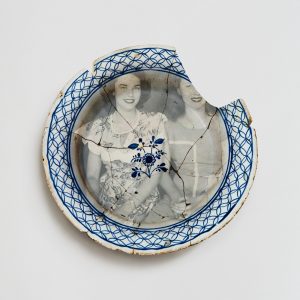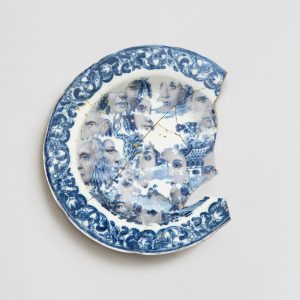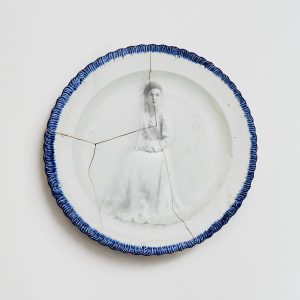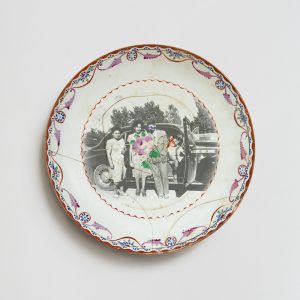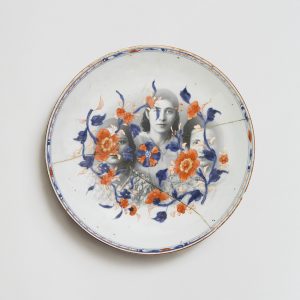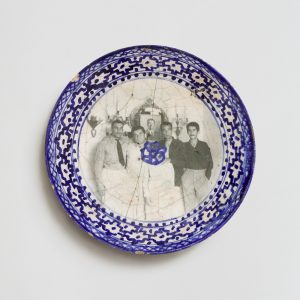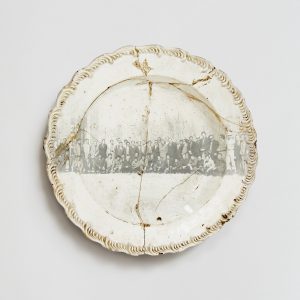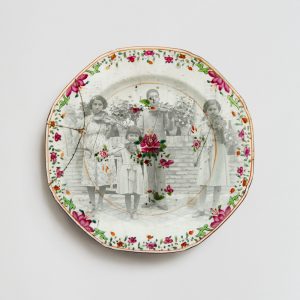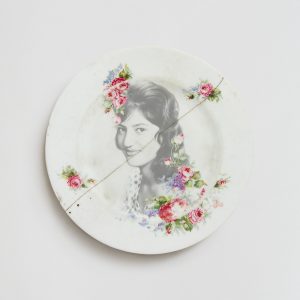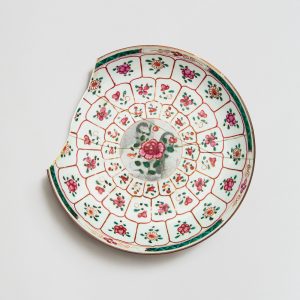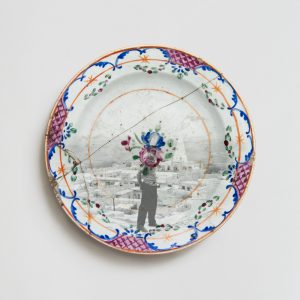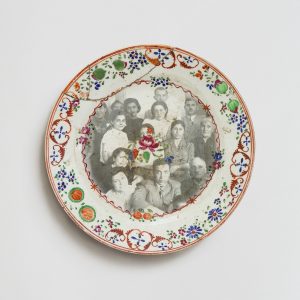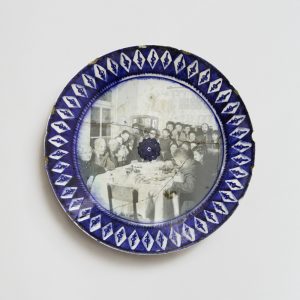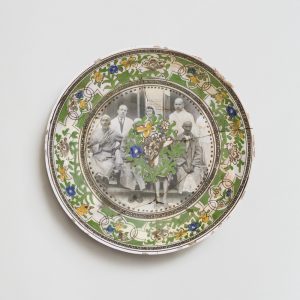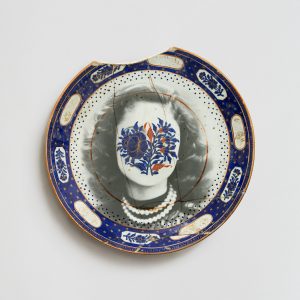Our Scattered Parts
Each memory has started disappearing since its rise time.
Time creates memories and annihilates them itself as well.
“Remembering” is going to a battle against time however during such a conflict there is nothing to be found except some scrappy parts.
This series is about memory and remembering. Plates are figurative of memory mechanism. The parts which appose beside together to make a substance (memory) and some parts are absent sometime. On the other hand plates are memory frangibility and susceptibility indication.
Old photographs in the series are selected from family album of common people about 1940 to 1970 in Iran.
There was a profession which called “Band-zani” in old Iran until some decades ago, and a person who called “Band-zan” (tinker) repairs broken porcelain or pottery dishes such a plate, bowl, pot , … “Band-zan” usually goes like a tinker from a quarter to another. He makes two tiny holes in both sides of crack or flaw in back of dishes and punch top of two thin and small iron or brass wire inside holes then rubs special glue made from lime and albumen on crack and stick broken parts together. Dishes will be ready again to use after repairing.
Plates had bold and usual presence in ordinary life, either in individual area and personal area is used. The plates which have used in this series all are from sample of usable and popular plates at Iranian house between about 1900 to 1970 that some made in Iran and some from abroad. One of the most well-known plates which had special popularity between Iranian families was called “Gol-e-Sorkhi” (Red flower); its pattern was several red rose and blossoms between green leaves on white background.
تکه های پراکنده ما
هر خاطره ای از لحظه تولد پای به راه نیستی می نهد
زمان ، خود خاطرات را می سازد و خود آن ها را ویران می کند
به یاد آوردن» ، به پیکارِ زمان رفتن است که در این کشاکش به جز پاره هایی چند نمی توان بازیافت»
در این مجموعه سعی شده است به مفهوم خاطره و یادآوری پرداخته شود . در این جا بشقاب ها تمثیلی از مکانیسم خاطره هستند . تکه هایی که کنار هم قرار می گیرند تا یک کل (خاطره) ساخته شود و گاهی بعضی تکه ها غایب هستند . از طرفی بشقاب ها نشان دهنده شکنندگی و آسیب پذیری خاطرات هستند
عکس ها همگی از آلبوم های خانوادگی افراد عامی انتخاب شده اند . عکس ها مربوط به سال های حدودا 1320 تا 1350 ایران هستند
در ایران قدیم تا چند دهه پیش حرفه ای وجود داشت به نام “بند زنی” که در آن شخص “بندزن” به مرمت ظروف شکسته چینی یا سفالی مثل بشقاب ، کاسه ، قوری و … می پرداخت . بندزن معمولا به صورت دوره گرد از محله ای به محله دیگر می رفت . او با ایجاد سوراخ در دو طرف ترک یا شکستگی در پشت ظرف و فروکردن دو سر یک مفتول آهنی و یا برنجی کوچک و نازک در سوراخ ها و مالیدن چسبی مخصوص روی ترک که از مخلوط آهک و سفیده تخم مرغ ساخته شده بود ، تکه های شکسته را به هم می چسباند . ظروف پس از مرمت شدن دوباره مورد استفاده قرار می گرفتند
بشقاب ها حضور همیشگی و پررنگی در زندگی روزمره داشتند و هم در حیطه فردی و هم در حیطه جمعی مورد استفاده بوده و هستند . بشقاب های که در این مجموعه به کار گرفته شده اند همگی از نمونه های مورد استفاده و رایج در خانه های ایرانی بین سال های 1280 تا 1350 هستند که بعضی در ایران و بعضی در خارج ایران ساخته شده اند . یکی از نمونه های معروف این بشقاب ها که در بین خانواده های ایرانی از محبوبیت خاصی برخوردار بود ، بشقابی بود با نام “گل سرخی” که نقش آن عبارت بود از چندین گل رز و غنچه های آن در لا به لای برگ های سبز ، روی زمینه ای سفید
